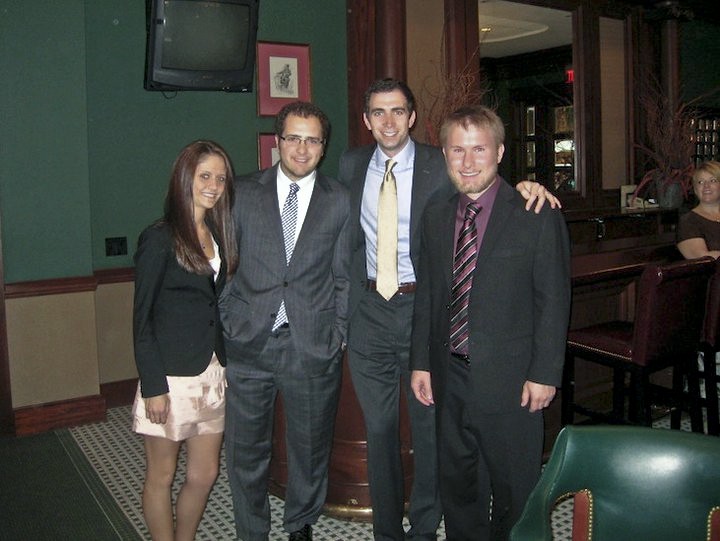Best-selling author speaks to Seidman students, faculty

Courtesy Photo / Julie Verhage Andrew Sorkin
Oct 17, 2010
Andrew Ross Sorkin, a journalist for The New York Times and author of “Too Big to Fail,” visited Grand Valley State University’s Pew Campus Tuesday.
Sorkin was the keynote speaker at the World Affairs Council of Western Michigan’s 61st anniversary dinner, an event co-sponsored by the Seidman College of Business. Prior to his keynote speech at Amway Grand Plaza, he took time to meet with a small group of students and faculty at the University Club in the DeVos Center.
The 33-year-old began by saying his goal in writing his book “was to construct a narrative to try to bring the public inside the room” where decisions were made to support Wall Street banks with an infusion of public cash. “Too Big to Fail” is the story of the current financial crisis in the U.S.
Sorkin said while it is easy to criticize the decision makers in retrospect with unemployment still hovering around 10 percent, the scene that may seem black and white “suddenly becomes very gray.”
He went on to talk about the so-called greed of the “big players on Wall Street.”
“There is no question the whole system is driven by greed from the very top, and the top is us,” he said. “In regards to the Wall Street CEOs, I’m not sure it’s about greed at all. The money becomes a scorecard for power. What drove decisions? Not money, but pride.”
Sorkin said he is no longer concerned about the banking system. Rather, he now looks at states and even countries that experience financial trouble.
“One of the great lessons of the book is how quickly things can fall apart,” he said.
Sorkin did not foresee a double-dip recession in the near future, but he predicted a long recovery.
“From my point of view, his comments on the bailout were the most interesting of his talk,” said Professor Daniel Giedeman, one of the faculty members who attended the main event that evening. “He thought the bailout was a very good idea, saying that even though unemployment today is around 10 percent, the Fed and Treasury departments had models suggesting that if nothing had been done, we could have an unemployment rate today of 25 to 32 percent.”
Sorkin also addressed the politically unpopular Troubled Asset Relief Program, which allows the government to purchase assets and equity from financial institutions.
“Sorkin suggested that TARP was unpopular in part because the unemployment rate is still so high and that people don’t realize that most of the money has been repaid or will be repaid,” Giedeman said. “He also said that the Fed and the Treasury didn’t go out of their way to explain to the public how important the bailout was because they were scared of creating an even bigger panic.”
New York Magazine described Sorkin’s novel, which debuted at No. 4 on the Times’ best-seller list, as a “nearly minute-by-minute account of the financial crisis as observed through the eyes of the clashing Wall Street CEOs who drove their investment banks into the abyss and the government regulators who watched powerless from the sidelines.”
The book has become a media sensation with Sorkin frequently appearing on financial networks like CNBC and Bloomberg.
Sorkin spent some 500 hours interviewing more than 200 people directly involved with the bailouts and banking crisis to write his book.
Professor Hari Singh, who also attended the main event, said one part that struck him was how Sorkin got all the information for his book.
“He divided his sources in to three groups: those who wanted to help him make an objective and historical document, those who wanted to spin the story in their favor and those that didn’t want to talk to him at all,” he said. “He was extremely persistent when it came to getting his information.”

























